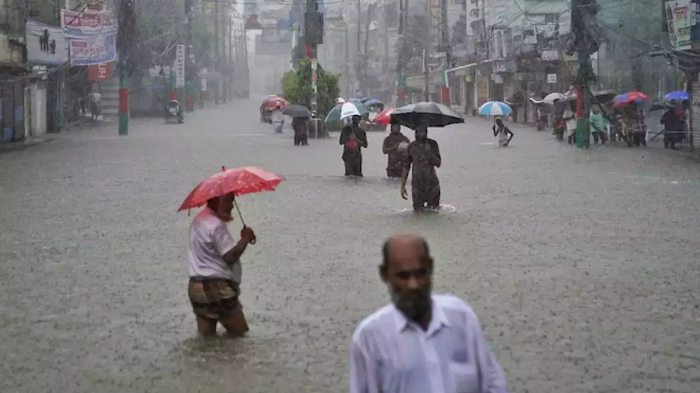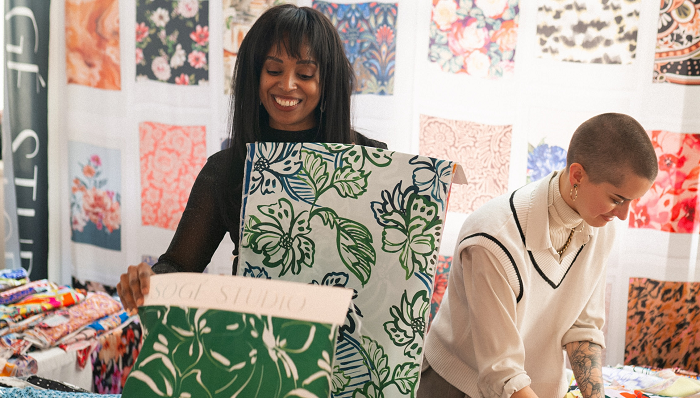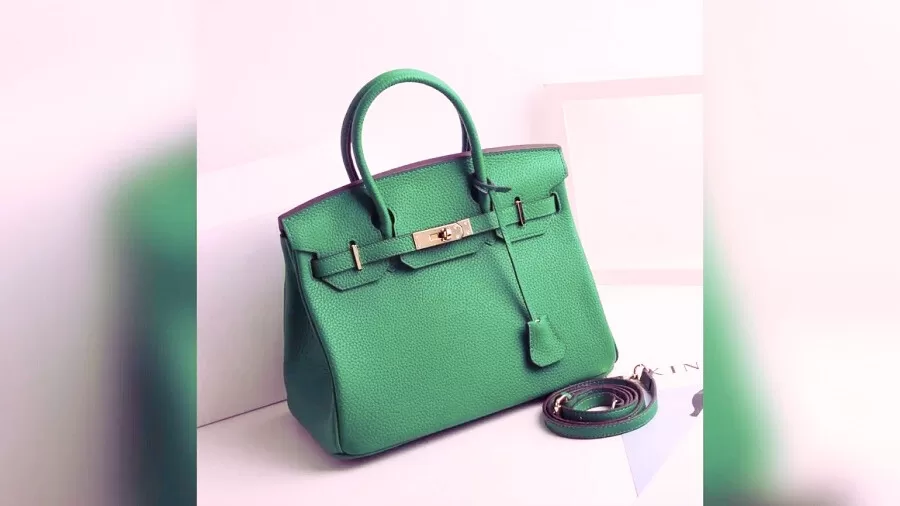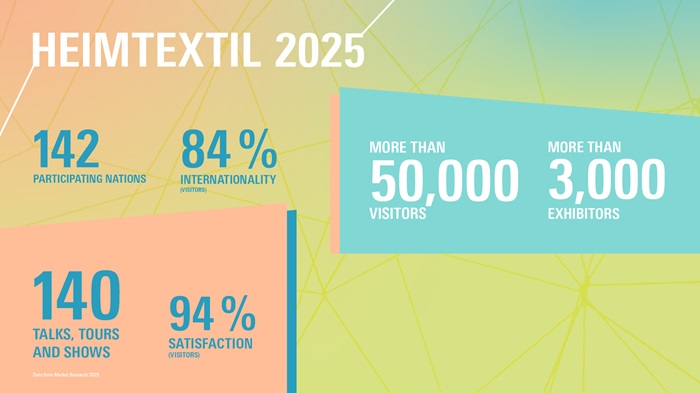FW
Recent media reports suggest, Bangladesh manufacturers have decided to appeal to the Indian government to allow greater access to the market for readymade garments, while reducing barriers including stringent testing norms. Bangladesh Commerce Minister, Tofail Ahmed would be meeting Commerce & Industry Minister Anand Sharma to discuss the possibilities of boosting trade between the two countries.
Though India and Bangladesh compete with each-other in some export markets, players from Bangladesh are keen to supply garments to the Indian market as well taking advantage of the low prices offered by them compared to Indian counterparts. However, they are finding the tough testing norms imposed by the government as a strategy to keep readymade garments from Bangladesh at bay.
Bangladesh is also taking initiatives to open trade offices in Siliguri and Guwahati to expand trade in the seven Northeastern states of India. The new government in Bangladesh aims to expand its export destinations and has also invited Indian companies to take advantage of the opportunities. Indian entrepreneurs and Indian industrialists can set up their industries in Bangladesh.
Waterless dyeing technology has caught on in a big way in the textile industry. It aims to reduce the vast volumes of water used in textile and garment dyeing and replaces water with recyclable CO2, thereby reducing energy use and eliminating the need for added chemicals. Waterless dyeing process works by putting carbon dioxide under extreme pressure of 1,100 lb per sq. inch, turning it supercritical. This means it has the properties of both a liquid and a gas.
Once the carbon dioxide cools and returns to its gaseous state, 95 per cent of it can be recycled. The technology also produces up to 50 to 75 per cent less carbon dioxide emissions. No additional additives are required and clothes dry quicker. And, of course, no water is used in the process.
Adidas was the first brand to introduce DryDye in 2012. This is a radical innovation because it employs an entirely different medium (compressed carbon dioxide) to transfer color. This process has multiple benefits: not only does it transfer color into the material more efficiently than water (using 50 percent less chemicals and 50 percent less energy), it automatically results in the recycling of the carbon dioxide itself.
Bangladesh is the second largest exporter of denim after China and it hopes to make four or five denim items for the European market by 2020. The number of denim makers in Bangladesh may go up to 30 by the year-end as demand for denim wear is on the rise worldwide. Currently, Bangladesh produces 20 million yards of denim a month against a monthly demand for 40 million yards.
However, Bangladesh has problems of capacity expansion. Some entrepreneurs cannot set up new denim mills or expand their existing capacities due to the high bank interest rates and inadequate gas and power supplies. International buyers are shifting orders from other countries like China to Bangladesh for price competitiveness but domestic units can’t cope with the high volume of orders. Even units producing nine lakh yards of the fabric a month are stretched to handle the orders from international retailers.
Faced with such potential, Bangladesh will hold its first denim exhibition, in March, at Dhaka. Bangladesh now exports jeans and other denim products worth at least 3.5 billion dollars a year to the US and EU markets. Fashion denims which use Lycra and spandex fibers are now being produced in the country and the industry is going for value-added dyeing and finishing in denims with laser applications, replacing the age-old sand blasting.
Rising labor costs has forced many Chinese, textile and garment manufacturers to shift their units to Vietnam. The average monthly salary of a filament weaving worker in China is as high as 4,000 yuan based on an eight-hour-a-day system, while that of a worker in Cambodia is only 600 yuan for working 12 hours every day.
Many young entrepreneurs are transferring their material manufacturing capacity to an industrial park in Vietnam. Vietnam’s textile and garment sector has seen fast and sustainable growth in the past few years. The country’s advantages are: the investment capital required is small; a quick payback period because of short capital turnover; lots of preferential policies from the state; and a large domestic consumption. There is a vast pool of young, skilled Vietnamese workers willing to work for low wages.
The Vietnam textile and garment industry is expected to grow 12 to 14 per cent a year, provide employment to 2.75 million people in 2015 and three million people in 2020 and with export revenues of $18 billion dollars in 2015 and $25 billion dollars in 2020.
On the other hand, China's manufacturing industry is less attractive to foreign investors because of the appreciation of the yuan.
The forthcoming edition of Milano Unica to be held from February 11 to 13, 2014, at Portello, Fiera Milano city will witness a new layout with specialized fabric sections for easy accessibility. The fabrics exhibition has now got a dedicated hall with different fabric varieties divided separately as techno, cotton/wooly, silky/print, laces/embroidery and knit.
Apart from the big trend area at the exhibition’s entrance, two more trend hubs have been devoted in each hall: a fabric trends hub and accessories trend hub, flanked by two video sections. Both, fabrics and accessories display would also don a new architectural concept in new colours and images.
The international textile fair organized in Italy, has been created through the vast experience, fine quality and tradition of four prestigious Italian exhibitions: Ideabiella, Ideacomo, Moda In, Shirt Avenue. The fair held twice a year once in February and then again in September showcases the finest quality products from both Italian and European textile manufacturers.
Jeanologia, the Spanish company that was recently awarded with WSGN Fashion Awards for being the best sustainable design team of the world, will participate at Colombiatex and Première Vision Brazil shows. While the former is scheduled from January 21 to 23, the other one is on January 21 and 22, where company will present their latest sustainable technologies for garment finishing.
Jeanologia is positioned in the South American market as a leader in sustainable technology for garment finishing. In Colombia, 95 per cent of garment finishing processes using laser and ecological techniques in the Colombian market are developed by technology of this company, while in Brazil, it is 70 per cent. Laser, e-soft and ozone technologies developed by the company save water, energy and chemicals while reducing costs in the finishing process of garments.
In particular, during the Colombiatex exhibition, the company will show the Flexi HS laser technology, eco-washing G2, E-soft and E-mark software. Also through a special event, Jeanologia designer will work with Colombian designers using the software E-Mark for getting the highest returns on their productions. Even during Premiere Vision Brazil, Jeanologia will exhibit the E-Mark software, the only software developed exclusively for apparel design laser, which is intended for more efficient production, also allowing the creation and improvement of designs on jeans.
The company has also developed the nano-technology with the E-soft that softens clothes with nano bubbles, saving an 80 per cent of energy and softener and 98 per cent of water. Additionally, this technology uses no chemicals and avoids discharges to the environment.
www.jeanologia.com
Between January and October 2013, readymade shipments by Indian garment exporters to the US grew 6.3 per cent while readymade shipments by Bangladesh jumped 11.4 per cent. Bangladesh’s garment exports increased at a compounded annual growth rate (CAGR) of 16.6 per cent. While that of India rose at a CAGR of just 6.8 per cent in the same period.
Bangladesh has been aggressively pushing garment exports and come up with a slew of policies to facilitate the industry. Among these are uninterrupted power supply and priority at the Chittagong port for shipment. Garment exports contribute 80 per cent of Bangladesh’s total export earnings.
In fact, many sourcing companies have South Asia offices in India, but they source garments from either Bangladesh or Sri Lanka. Apparel companies are tied to low-wage, high-capacity countries like Bangladesh. However, because of recent accidents like a spate of fires and the collapse of garment factories, there was a slowdown in Bangladesh’s garment exports. But since then the sector has shown a remarkable revival. Bangladesh is likely to remain the top destination for new apparel sourcing over the next five years.
Bangladesh's $20 billion garment industry, which took 30 years to build up, is made up of more than 4,500 factories and four million workers.
Garment manufacturers and exporters of Pakistan want government policies to be friendly towards their business. They want the government to take concrete measures for un-interrupted supply of electricity and gas to the apparel industry and to all its supporting sectors. As per them, now they are forced to spend on energy infrastructure like wood and coal boilers that eats into their margins. This is a serious problem. The energy crisis has hampered industrial growth, slowed down GDP and forced industries to relocate, contributing to massive unemployment and disparities. The energy shortfall has also diverted foreign investment away from Pakistan.
Garment exporters complain of delays in sales tax refunds. Facing a liquidity crunch they want zero rating for the textile sector to be restored. The government had withdrawn the zero rating from the textile, leather, carpets, sports, and surgical good sectors. Exporters say this withdrawal at a time when the country has a huge trade gap has resulted in inflation and the devaluation of the Pakistani rupee. They want export-friendly policies to stop the flight of capital and save the industry. The reasoning is that the export volume of Pakistan’s apparel products can be increased if the government takes all stakeholders on board and finalises export policies after consultations.
China’s apparel industry is expected to jump 8.2 per cent, an annualized increases of 10 per cent over the past five years. However, even though exports are a strong, but shrinking. In 2013, exports are expected to increase 6.6 per cent, representing 25.2 per cent of industry revenue. Exports as a share of revenue peaked at 86.8 per cent.
Rising cost of raw materials and higher labor costs have led to a decrease in profits in recent years. In 2013, profit as a proportion of industry revenue was estimated at 6 per cent. By 2018, revenue within the apparel manufacturing industry in China is expected to increase at an average annualized rate of 6.9 per cent. Increasing disposable income in rural areas and Tier II, III cities will be a major driving force behind the industry’s growth. However, trade barriers, currency appreciation and rising raw material prices will challenge apparel manufacturers over the period.
Under the sluggish domestic economic conditions in 2012, consumers became more price-sensitive when purchasing apparels. A number of consumers tended to shop via the net which provides higher discount rates than store-based outlets. In addition, a large number of players collectively opened online outlets in 2012.
Tingley Rubber Corporation has introduced a line of flame resistant, high visibility apparel called: Job Sight FR. It is meant to protect electric utility workers. Other industries that need dual high visibility and FR protection include construction, waste management, telecommunications, transportation and petrochemicals. For over 115 years, US-based Tingley Rubber has been a leader in protective footwear and clothing.
Non flame-resistant high visibility garments such as vests worn over flame-resistant garments can dramatically decrease the effectiveness and protection of flame resistant clothing. It’s important for workers’ protection that the high visibility products conform to the same standards as their flame resistant clothing. In many cases the new Job Sight FR line can replace traditional FR work wear with a product that is both flame resistant and has high visibility, reducing the need for a worker to wear both.
The new Job Sight FR line consists of products that are developed with a revolutionary blend of 55 per cent modacrylic and 45 per cent cotton fibers to maximize wearer comfort and safety. Unlike other high visibility FR products that are heavy, rough and uncomfortable, the high cotton content in the Job Sight FR products make them soft, breathable and comfortable. This new offering features safety vests, T-shirts and sweat shirts.
www.tingleyrubber.com/











